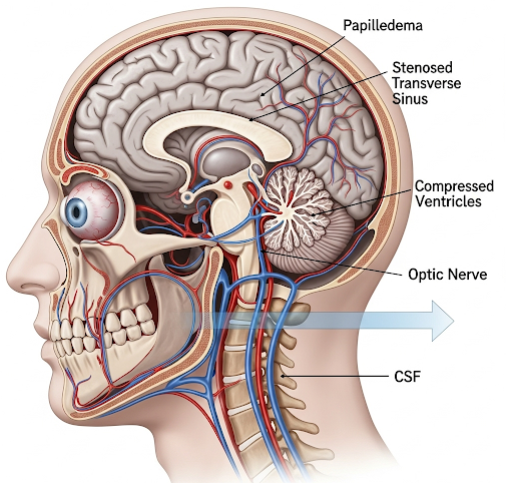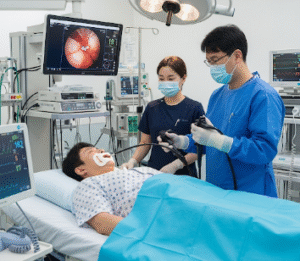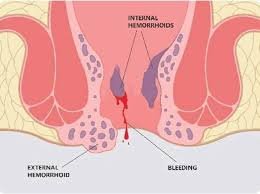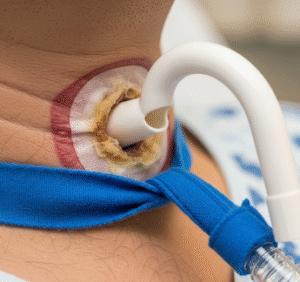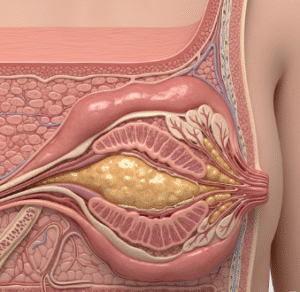Overview
Idiopathic Intracranial Hypertension (IIH), also known as pseudotumor cerebri, is a neurological condition where the pressure inside the skull (intracranial pressure) is elevated without any detectable cause such as a brain tumor or infection. This increased pressure can lead to symptoms such as headaches, vision problems, and in severe cases, permanent vision loss. In Korea, advanced neurology and ophthalmology centers offer state-of-the-art diagnostic tools and effective treatment options for IIH, combining medical therapy, surgical interventions, and lifestyle management.
What is Idiopathic Intracranial Hypertension?
IIH occurs when cerebrospinal fluid (CSF) builds up in the skull, increasing intracranial pressure. The condition mimics symptoms of a brain tumor but no tumor is present. It is called “idiopathic” because the underlying cause is unknown. IIH is most common in women of childbearing age, especially those who are overweight.
Symptoms
- Persistent or severe headaches, often worse in the morning or when lying down
- Transient visual obscurations (temporary vision loss or blurring)
- Double vision
- Pulsatile tinnitus (hearing a whooshing sound in the ears)
- Nausea and vomiting
- Neck or shoulder pain
- Papilledema (swelling of the optic nerve) detected during eye examination
Causes
While the exact cause is unknown, factors may include:
- Impaired absorption of cerebrospinal fluid
- Hormonal changes
- Obesity-related metabolic effects
Risk Factors
- Female gender
- Age (typically 20–40 years)
- Obesity or recent rapid weight gain
- Certain medications (e.g., tetracycline antibiotics, excessive vitamin A, corticosteroid withdrawal)
Complications
- Permanent vision loss if untreated
- Chronic headaches
- Reduced quality of life due to persistent symptoms
Prevention
Since the cause is unknown, there is no guaranteed prevention. However:
- Maintaining a healthy weight
- Avoiding medications linked to IIH when possible
- Regular eye and neurological check-ups for at-risk individuals
Treatment Options in Korea
Diagnosis
- Ophthalmologic Examination – Checking for papilledema and vision changes
- MRI or CT Scan – To rule out tumors or other structural causes
- Lumbar Puncture (Spinal Tap) – Measures cerebrospinal fluid pressure and analyzes fluid
- Visual Field Testing – Assesses peripheral vision loss
Medical Treatments
- Acetazolamide – First-line medication to reduce CSF production
- Furosemide – Sometimes used as an adjunct diuretic
- Topiramate – May help reduce pressure and also promote weight loss
- Pain management – For headache relief
Surgical or Advanced Therapies
- Optic Nerve Sheath Fenestration – To relieve pressure on the optic nerve and preserve vision
- CSF Shunting (Ventriculoperitoneal or Lumboperitoneal) – Diverts excess CSF to reduce pressure
- Venous Sinus Stenting – For patients with venous sinus narrowing contributing to pressure buildup
Rehabilitation and Support
- Weight loss programs with nutritionists and trainers
- Vision rehabilitation therapy for patients with vision impairment
- Psychological support for coping with chronic symptoms
Top Hospitals or Clinics in Korea
- Samsung Medical Center – Neurology & Ophthalmology Departments – Multidisciplinary approach for IIH management
- Seoul National University Hospital – Neuro-ophthalmology Unit – Specialized in optic nerve protection and surgical interventions
- Asan Medical Center – Neurology Department – Advanced neuroimaging and treatment options
- Yonsei Severance Hospital – Neurosurgery & Ophthalmology Collaboration – Expertise in CSF shunting and optic nerve procedures

